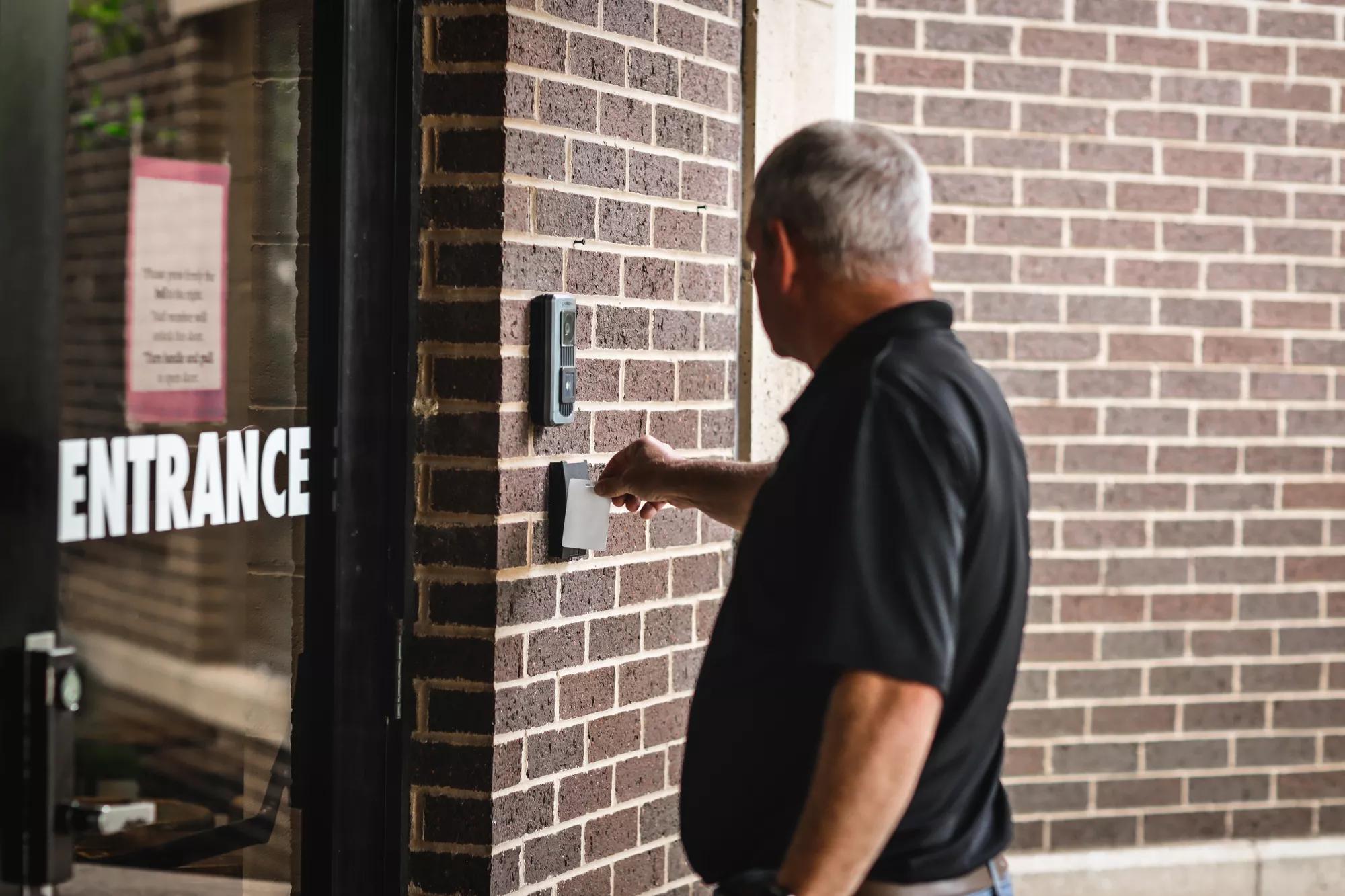Access Control Credentials: What You Need To Know

What You Need to Know About Access Control Credentials
Access control credentials can be an unfamiliar topic that surfaces when researching different ways to electronically secure your business or workplace. Terms like prox card, swiper, or access badge may be terms you have heard or came across during a quick Google search, but what do they mean, and which one is best?
What are access control credentials?
Access control credentials are simply an industry term for the means of validating specific people who are authorized to enter or access a secure area. The electronic system that is securing a door needs to know whether the person attempting to gain entry has permission at that time, and on that day. An authorized person most commonly uses a plastic card or small key fob to validate themselves.
What types of access control credentials are available?
Types of access control credentials include:
1. Key fob and reader
Most access control systems pair a card or key fob with a reader outside of the secure space. The reader is typically a small rectangular box on the wall with a red or green light on it. When an authorized person presents their credential, the door will unlock and grant them access. At the same time the system will log that entry, keeping a record of who entered the space and when.
2. Proximity based access control
As technology has advanced, so have attempts to forge or copy the credentials. Some types of credentials that were once considered very secure, are now easily duplicated with low cost hardware that can be purchased by anyone online. One such type of credential is called a proximity card, or prox card for short. This was once the most secure way to electronically lock an area, but now more secure credentials should be considered.
The term “prox” simply refers to the level of encryption that resides inside of a card or fob. This does not mean all cards or fobs are bad or unsecure. From the outside, a more secure credential may not look any different than the older and less secure prox. It is the level of encryption inside that matters. So, make sure you work with your security provider and/or manager to understand the level of security that is being recommended.
3. Biometric readers
Biometric readers have become more common and reliable. Five years ago it was difficult to find a fingerprint or face recognition reader that was both affordable and accurate. Users would attempt to enter a door multiple times with failed readings and it could become very frustrating. Today’s biometric technologies are much more accurate and affordable. A key advantage to using a biometric reader is you don’t forget your finger or face at home. You also don’t drop them in a parking lot allowing an unauthorized person to take advantage. With almost every modern smartphone using some type of biometric authorization, your users will already be very familiar with this technology.
4. Dual authentication
Another option is to incorporate what is called a “dual authentication reader” into your access system. A dual system uses what someone has (a card or fob) and what someone knows (a pin number). This helps when that card is lost in the parking lot. The would-be attacker still cannot enter because they don’t have the pin number.
5. NFC Credentials and smartphones
Finally, some users are adopting the use of NFC credentials and smartphones to gain access. Many access control and reader brands are now using this technology. Using a secure app, Bluetooth, or your phone's built-in NFC chip (similar to how Apple Pay or other tap-to-pay systems work), can be very convenient for your users. Some smartphone NFC chips will even work when the battery has lost power.
Which access control credentials are right for protecting my business?
As the development and availability of new credentials are constantly evolving, it is a good idea to work with a security provider that is current on the most secure standards. They can help you select a credential and a matching reader that will stand up to a modern attack.
Working with a qualified security sales consultant will ensure you are not installing old technology into a new installation. There is an access control solution available that is convenient, secure, and works for your user’s technology level.
Disclaimer: By using the Blog section of this website (“Blog”), you agree to the terms of this Disclaimer, including but not limited to the terms of use and our privacy policy. The information provided on this Blog is for information purposes only. Such information is not intended to provide advice on your specific security needs nor to provide legal advice. If you would like to speak to a Security representative about your specific security needs, please contact us.























